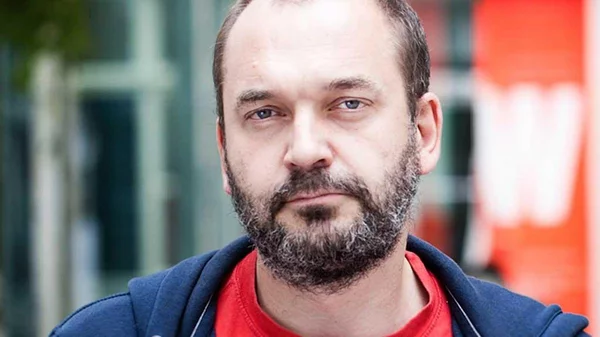Artur Żmijewski
Artur Żmijewski was born in 1966 in Warsaw, Poland, where he lives and works. He studied sculpture at the Academy of Fine Arts in Warsaw (1990–1995) and at the Gerrit Rietveld Academie, Amsterdam (1995). Working across installation, photography, video, and film, his practice explores social and political issues, often engaging with trauma, memory, and collective experience. He received the Fondazione Sandretto Re Rebaudengo Per L’Arte Prize (2000) and presented Repetition at the Polish Pavilion of the 51st Venice Biennale (2005). His film Them (2007) was included in documenta 12, Kassel, and during his DAAD residency in Berlin (2007–2008) he developed the series Democracies. In 2012, he curated the 7th Berlin Biennial. Recent solo exhibitions include a show at Padiglione d’Arte Contemporanea, Milan (2022), accompanied by a major monograph. His works are held in numerous international collections, and in 2010 he received the Ordway Prize from the New Museum, New York, and Creative Link for the Arts.

RED ARMY MEMORIAL AND MAUSOLEUM: RECOMPOSITION
2024–2025
photo collage on paper
Produced by the Museum of Modern Art in Warsaw, Visual Culture Research Center, and RIBBON International for the Kyiv Biennial 2025
The black-and-white photographs in the Red Army series were taken by Artur Żmijewski at the Soviet Military Cemetery in Warsaw and show the two groups of figures Heroism by Jerzy Jarnuszkiewicz and Sacrifice by Stanisław Lisowski, which are part of the monument created there to honor the Red Army as Poland’s liberator. Rather than depicting the figures as they appear in real life, the artist creates a new narrative using digital photo collages, and presents it as his investigation into what the monument hides beyond what is visible at first glance. Detached from their site-specific context and loaded with a homoerotic connotations, the photographs raise a question about a new contextualization of the monuments and how to deal with our political heritage as both a source of conflict and a cultural asset. By manipulating the images of the Red Army soldiers, the artist recomposes the monument as a puzzle, to finally reveal it as not an honor but a warning.
EIKŌN
2025
diorama with wax doll, costume
The diorama features a wax doll, probably from the 1920s or 1930s, that has seen quite a bit of wear and tear and is dressed in the uniform of a modern Ukrainian soldier. Resembling the canonical aesthetics of traditional Orthodox icons, the work also alludes to The Little Insurrectionist, a statue in Warsaw by Polish sculptor Jerzy Jarnuszkiewicz commemorating child soldiers who fought and died during the 1944 Warsaw Uprising. By overlapping the brutal experiences of Russia’s ongoing war against Ukraine with those of the 20th-century world wars and infusing the image with religious connotations, the artist elevates the inanimate figure of the doll warrior to a sacred level, “the Christ himself; Dead and divine, and brother of all, and here again he lies” (Walt Whitman).